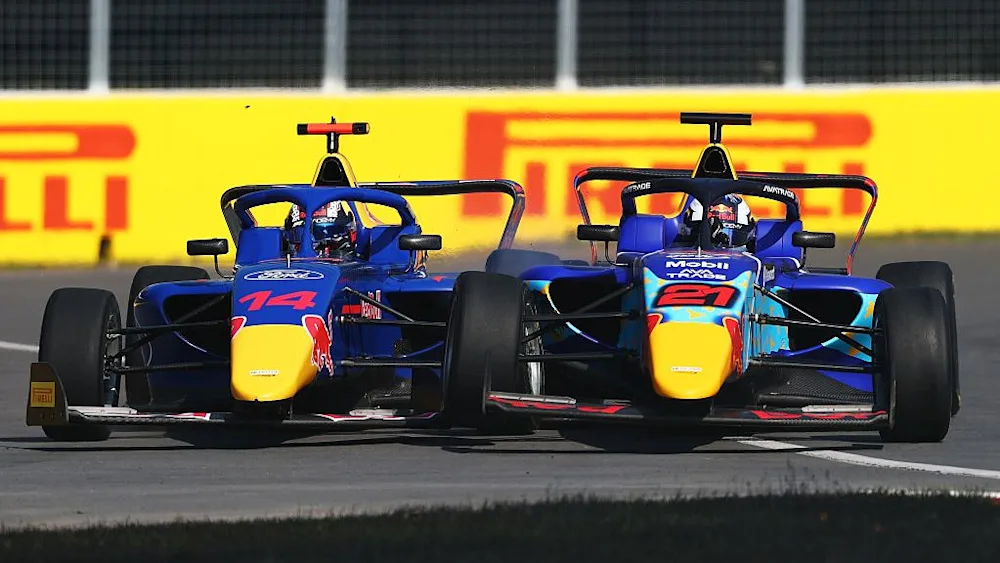Scott Dixon cruises to victory in Long Beach - Race Report
- DIVEBOMB Motorsport
- Apr 21, 2024
- 4 min read
Written by Katie Gregory

After a six-week-long break from racing for championship points, the NTT IndyCar series returned to Long Beach for some intense racing under the Californian sunshine. Felix Rosenqvist was the star of Saturday's qualifying as he gifted Meyer Shank their first-ever pole position. Still, it was Scott Dixon who was victorious after a strategy gamble, an excessive amount of fuel saving, and even more perseverance.
Pole-sitter Felix Rosenqvist started on the black primary tyre, with a plan to switch to the green alternate for his second stint. The rest of the top ten also went for this option, with the only anomaly among the frontrunners being Will Power - who was starting in second place.
Rosenqvist would have been all too aware of a hungry Will Power starting behind him, especially with Power on softer tyres that could give him a great start. Fortunately for Felix, he got off to a super start and led the field with Power tucking in nicely behind him.
Unfortunately, as soon as Power gained the tow he was looking for, he passed Rosenqvist with ease and took the lead out of turn one. With Power driving in clean air, he could dictate the pace and manage his tyres carefully. The rest of the drivers did not have this luxury, however, and the pack was so tight it seemed inevitable that contact would be made.

Viewers certainly did not have to wait long before this came to fruition, as lap four saw the McLaren of Pato O'Ward hit the back of Alexander Rossi. O'Ward had locked up before he made contact, giving his teammate rear damage that sent him limping to pitlane. The damage to the rear may have been fixable, but the loss in position was anything but - with Rossi leaving the pits in 27th place. Things went from bad to worse for McLaren, as O'Ward was sentenced to a drive-through penalty for the avoidable contact, which left him in 26th place.
Hungry for a win, Power had opted against saving his tyres and instead extended his lead, creating a gap of five seconds by lap ten. This gamble paid off, as it was only a few laps later when Christian Rasmussen clipped the corner of turn four and brought out the first yellow of the race. The caution gave the drivers a big decision to make, one that would define their race result entirely.
Newgarden, Palou, Herta and Ericsson all stayed out as lap fifteen would be too early to pit if they were to make the two-stop strategy work. The odds were stacked against them, but always the gamblers - Scott Dixon and Will Power decided to head to pit road. This strategy would require an immense amount of fuel saving, a number which would be almost impossible to hit, especially while maintaining a competitive track position.
The caution was lifted on lap 20, and Newgarden led the field with Ericsson close behind. Further back, Power and Dixon began to battle it out in 12th and 13th, effectively battling for the lead of their strategy.
The frontrunners on the primary strategy eventually pitted on lap thirty, putting them in a prime position to execute the two-stopper successfully. While Newgarden, Ericsson and Herta all switched to the alternative tyre, those on the opposite strategy had circled back to the front.

Dixon led for twenty laps before both he and Power made their way to the pitlane on lap 51. Newgarden seized the opportunity that leading presented and built up a 23-second gap to Dixon, before eventually pitting for the last time on lap 54. Herta became the new race leader, followed by Palou and Ericsson.
As entertaining as it had been to watch the different strategies unfold, it was time for the two to meet. With Dixon in 7th and Newgarden in 8th, there would be no more trips to the pits for either of them and there would be no more exchanging of the lead without hard racing. The pair had avoided each other the entire race, and could not for any longer.
Lap 61 saw Herta and Palou pit, making Dixon the race leader once again. Although he was driving in clean air, Dixon had a hungry Josef Newgarden behind him with nothing but time. By lap 69 the gap between them was only 3 seconds, and Newgarden had nothing to lose and everything to gain. With a victory on the line, Dixon began to use his push-to-pash and could no longer afford to lift and coast.
If Newgarden was taking his time to make a move on Dixon, the arrival of Herta and Palou behind them signified it may be almost gone. Even with Newgarden 0.6 seconds behind him, Dixon was still managing to hit his fuel numbers and showcased the stellar drivability of his car by taking the corners with ease. Lap 76 saw the pressure on Dixon ease entirely, as Herta made contact with Newgarden and sent him down to fourth place.
With the end in sight, Dixon held off Herta for the remaining laps to take a spectacular victory that no one was expecting. Throughout the race, it seemed inevitable that Dixon would have to stop again, or eventually be overtaken by a driver with no need to fuel save. However, Scott Dixon continues to simultaneously be a veteran and an anomaly in this sport: making the impossible seem possible and statistics look silly.









Comments